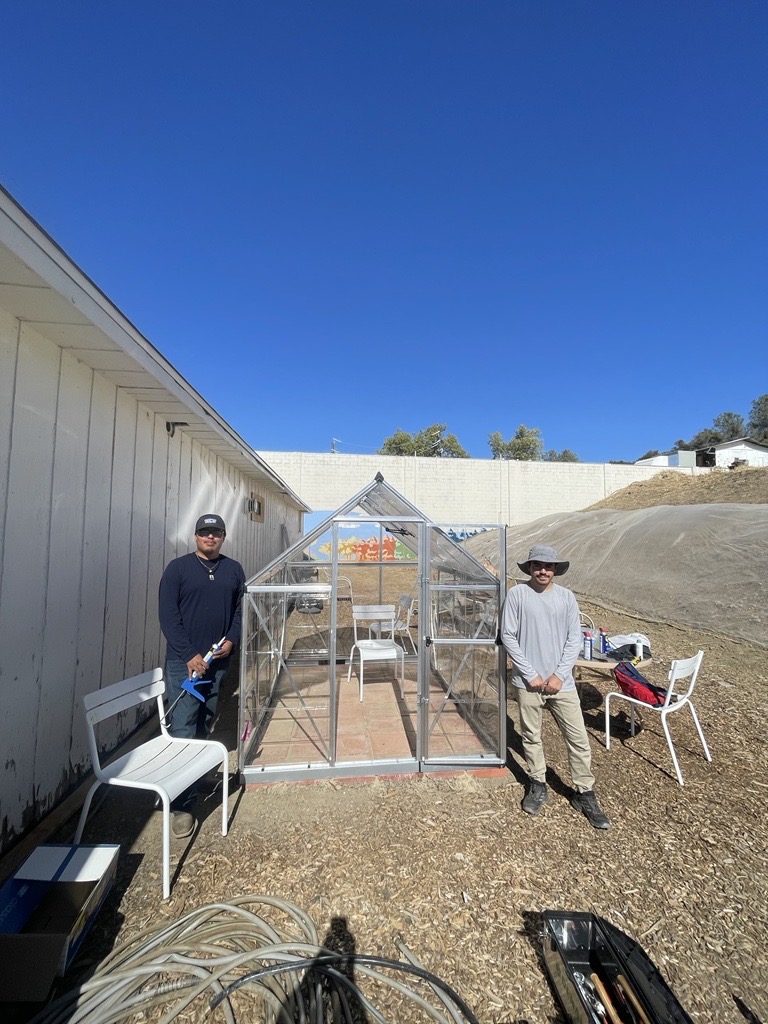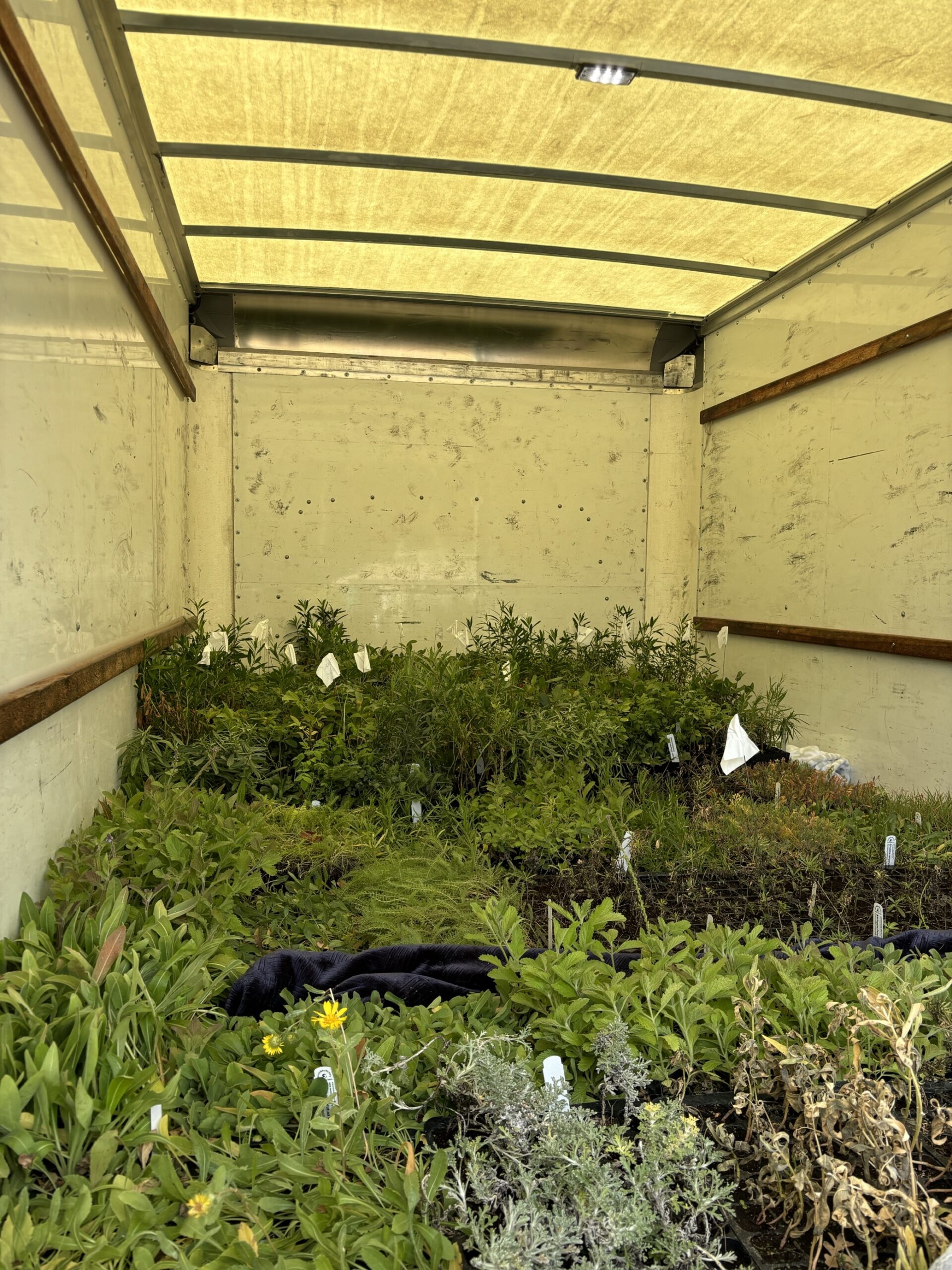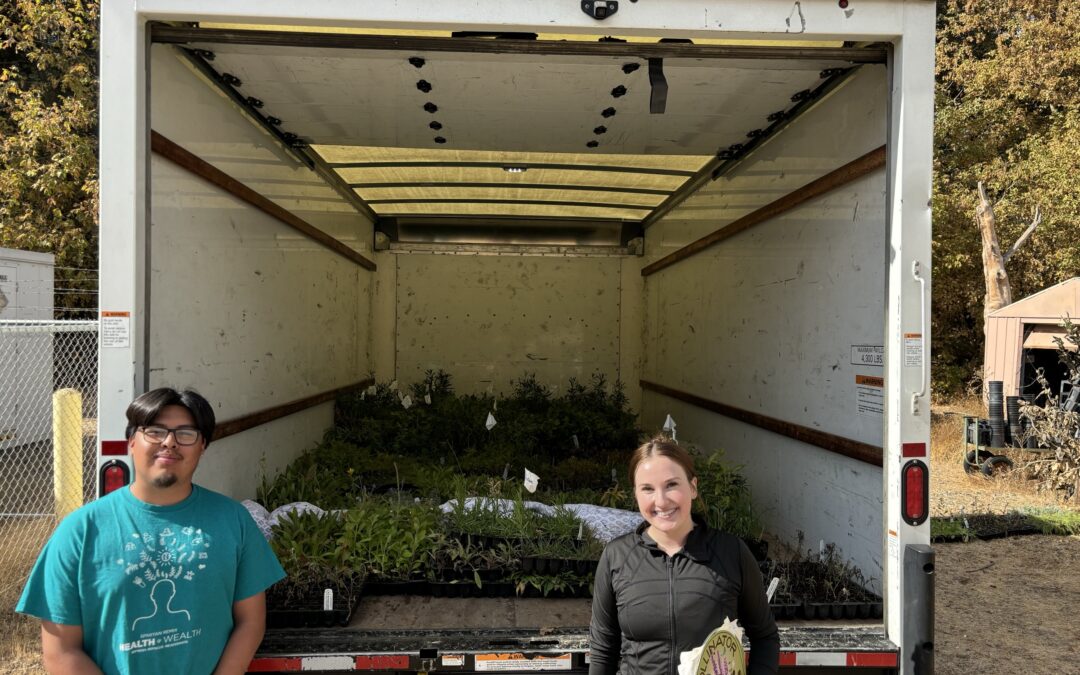During the last week of October, a team from the Sierra Resource Conservation District (SRCD) went to Lockeford, California to pick up over 3,000 plants that were provided from the Xerces Society. The plants are packaged in three types of kits: garden kits, hedgerow and riparian hedgerow kits, and wildflower grassland and riparian wildflower kits. The goal of these native plants is to promote habitat for the monarch butterfly, whose populations are in decline due to factors such as the loss of milkweed breeding habitat, pesticide use, habitat destruction, and the impacts of climate change. Milkweed is essential for monarchs, serving as the sole food source for their larvae and the only plant where females will lay their eggs. Planting native species not only helps support monarch butterflies, but also other beneficial pollinators and bird species, fostering a more resilient and diverse ecosystem in the Central Valley.
The District’s Collective Impact program will plant a wildflower grassland kit over a 5,400 square foot area at the field office in Auberry. The kit from the Xerces Society will provide food, water, cover, places to raise young bees, butterflies, and other beneficial pollinators, while implementing sustainable practices. The garden space is being developed as a Certified Wildlife Habitat and a Firewise demonstration garden. The certification under the National Wildlife Federation will demonstrate a haven for local birds, butterflies, and other neighborhood wildlife. The Firewise demonstration garden will offer a community model of how a native landscape can both enhance biodiversity and meet defensible space guidelines for fire safety.

The Ponderosa Lions Club awarded SRCD with a California Lions Foundation Environmental Grant for a greenhouse next to the pollinator garden. Over the course of six days, volunteers from the California Climate Action Corps, College Corps, and the Auberry community contributed 46 hours of labor to prepare and construct the greenhouse. This greenhouse will house up to 500 California native plants annually, which will be distributed to various projects within the District, including community events such as the Earth Day Fair.
The District’s Agriculture and Rangeland program is implementing native plant initiatives at three distinct sites using plant kits provided by the Xerces Society. The first site is a raisin farmer in Southwest Fresno, where the grower aims to install a hedgerow to attract pollinators and beneficial insects. The second site is a nearby vegetable farmer in the same region, where the grower also plans to use a hedgerow kit for similar ecological benefits. The third site is China Creek Park, an undeveloped park managed by Fresno County. In partnership with the California Native Plant Society, which has been working to restore native vegetation at China Creek, the Agriculture and Rangelands Program will contribute to the Park’s native plant restoration efforts.

The District’s Forestry and Watershed program will plant 600 native plants from the Xerces Society and 200 native conifers as part of a post-fire stream restoration project at the headwaters of the Dry Creek Watershed. This initiative will be carried out in collaboration with CAL FIRE, the Arbor Day Foundation, CA Department of Water Resources, California Conservation Corps, Coarsegold Resource Conservation District, and California State University, Fresno. This will restore the natural ecosystem and re-establish vital wildlife habitat, helping to return the area to its pre-fire state.
The Xerces Society plays a crucial role in promoting biodiversity and supporting the recovery of monarch butterfly populations in the Central Valley. Through ongoing and future projects between SRCD and the Xerces Society, a dedicated effort will form to restore critical habitats that support pollinators, birds, and other wildlife. SRCD’s core values of stewardship, responsibility, and innovation are the foundation in which the District approaches enhancement of local ecosystems and advances climate resilience. With each step to plant, protect, and restore natural habitats, a healthier, more diverse environment is nurtured for future generations.


Recent Comments